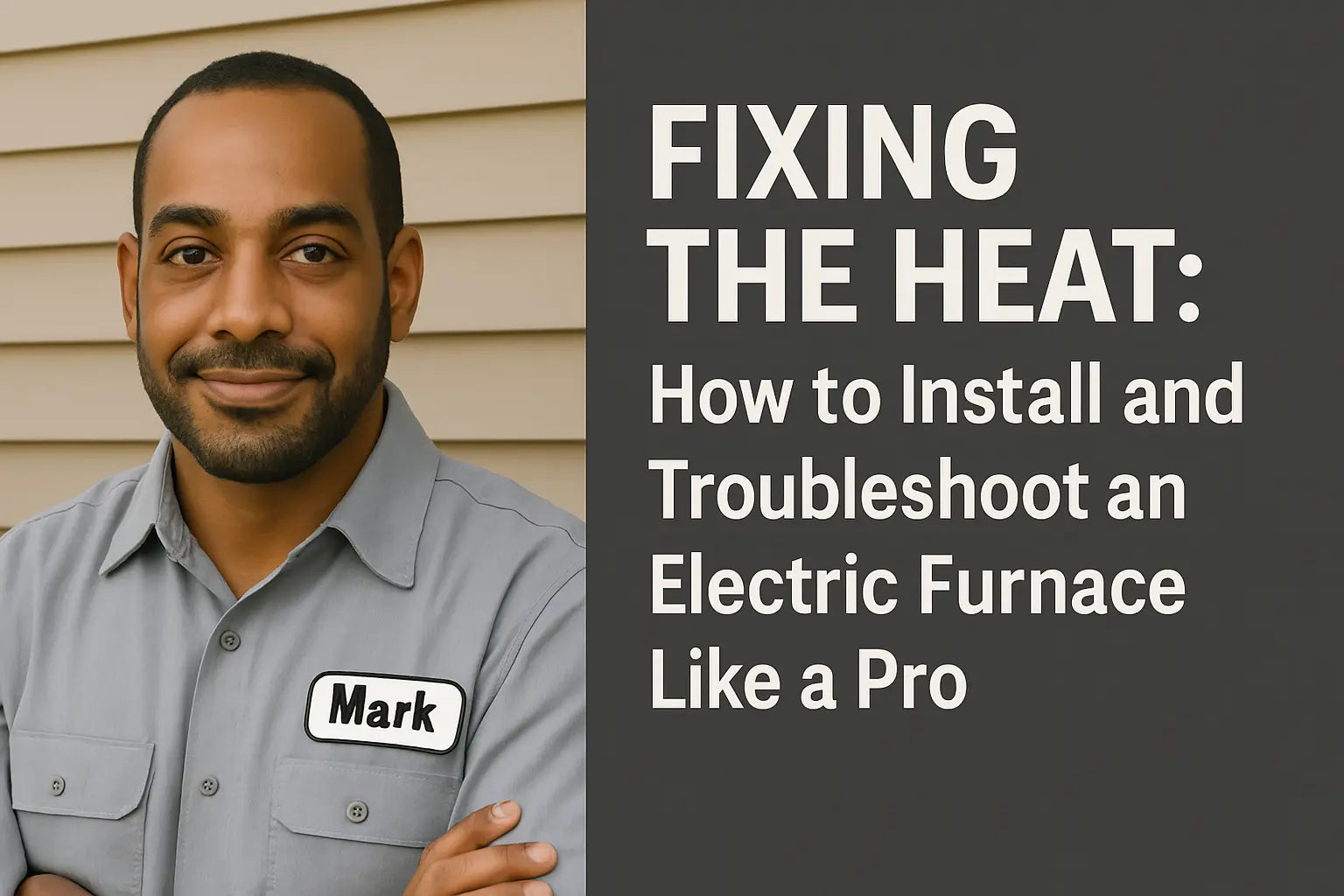Hey There, I'm Mark 👋
Look, I’ve installed more furnaces than I’ve had hot dinners, and I’ve crawled under enough homes to know that whether it’s your first electric furnace or your fifth, you’ve probably got questions. Maybe your heat's out in the middle of January 🥶, or maybe you're looking to do a fresh install before winter creeps in. Either way, we’re gonna get through this together—no jargon, no fluff.
So grab your work gloves or a coffee, and let’s get to work.
Why Go Electric? ⚡
Electric furnaces are like the golden retrievers of the HVAC world: loyal, easygoing, and low maintenance. They don’t need gas lines, they’re generally safer than combustion units, and they work great for homes without natural gas access.
Here’s why folks are choosing electric furnaces more than ever:
-
Cleaner energy: No carbon monoxide risks.
-
Lower upfront cost: Installation tends to be cheaper than gas furnaces.
-
Compatibility with solar: Pair it with solar panels and you’re cooking with... well, sunlight!
According to Energy.gov, electric resistance heating (like what you get in an electric furnace) can be a good option if you're in a milder climate or using a heat pump combo system.
The Right System for the Right Job 🏡
Not all electric furnaces are created equal, so take a beat before grabbing the first one you see online. The Electric Furnaces Collection at The Furnace Outlet has models suited for mobile homes, residential homes, and even light commercial spaces.
Here’s what to check before buying:
-
Size (BTUs): Use a calculator like this one from HVACDirect to match your square footage to the right BTU capacity.
-
Compatibility with air handlers or heat pumps
-
Voltage requirements (208V or 240V)
-
Ductwork configuration
Quick tip: Oversizing your unit “just to be safe” might sound smart, but it can actually cause short-cycling and waste energy. You want Goldilocks sizing—just right.
Step-by-Step: Installing an Electric Furnace 🧰
Now, I always say if you're not comfy with electrical wiring, call in a pro. But if you’ve got some skills and you’re ready to roll up your sleeves, here’s a simplified install overview.
1. Shut Off the Power (Seriously 🔌)
Cut power to the breaker before you touch anything. This isn’t just a tip—it’s the law of DIY survival.
2. Set Up the Mounting Area
Electric furnaces can be installed vertically or horizontally depending on the model. Clear out any insulation or obstructions.
3. Connect the Ductwork
Use sheet metal screws and HVAC tape to connect the supply and return ducts. Seal everything up tight so you don’t lose heat through the seams.
4. Wiring It Up
This is where things get spicy. Connect:
-
High voltage power lines to the breaker panel
-
Low voltage thermostat wiring
-
Ground wires
Here’s a quick visual from The Unico System that shows how the wiring flows.
5. Install a Disconnect Switch
Most local codes require a shut-off switch within arm’s reach of the furnace. Don’t skip it or you’ll fail inspection.
6. Test Everything
Once you’ve got it wired, powered, and ducted, fire it up. Check airflow, voltage, and listen for odd noises. If your furnace hums like a kitten—job well done 🐾.
Troubleshooting Common Electric Furnace Issues 🔎
Let’s be honest—things go wrong. That’s life. But the good news is, most issues with electric furnaces fall into a few common buckets. Here's how I handle the usual suspects.
1. Furnace Not Turning On
-
Check the breaker first—electric furnaces are power hogs.
-
Look for a blown fuse in the disconnect box.
-
Test the thermostat by jumping the R and W wires.
If everything checks out and it still won’t start, it might be a faulty sequencer or blower motor.
2. No Airflow or Weak Air
-
Dirty filters can choke your system. Swap them out.
-
Inspect your blower motor capacitor with a multimeter.
-
Look for disconnected or crushed ductwork.
I always recommend reading through Cote's Mechanical’s guide when air issues crop up—it’s straightforward and helpful.
3. Heat Not Getting Hot Enough
-
Check heating elements for continuity.
-
Make sure the sequencer is activating all stages of heat.
-
Look for undersized wiring causing voltage drops.
A voltage drop under load? That’s a recipe for lukewarm disaster. You can check this with a clamp meter while the system’s running.
Mark’s Bonus Tips for Staying Toasty 🔥
-
Install a smart thermostat. Something like the Ecobee helps you control temps remotely and save on bills.
-
Insulate your ducts—especially in attics or crawl spaces.
-
Schedule a yearly checkup. Even if it’s DIY, give your furnace a once-over before winter.
And don’t forget to label your breakers while you're in the panel. I can't tell you how many times that’s saved me on a service call.
When to Call a Pro 📞
You’ve got grit, I know. But there are times when a licensed tech is the right move:
-
Smell of burning plastic? Call.
-
Lights dimming when furnace kicks on? Call.
-
Repeated fuse blows? Call.
You’re not giving up, you’re playing it smart. Sites like HomeAdvisor can help you find a qualified HVAC pro in your zip code.
Wrapping It Up — Mark Style 😎
Whew! That was a lot, huh? But listen, you made it. If you stuck with me through this whole guide, you’re officially smarter than 90% of folks buying furnaces online today.
Installing and troubleshooting an electric furnace isn’t just a chore—it’s an adventure. But with the right tools, the right knowledge, and a little help from yours truly, you’ll be warm and worry-free for years to come.
If you're ready to upgrade, poke around The Furnace Outlet’s electric furnace collection—great models, great prices, and no-nonsense support.
Want to make sure you choose the right size electric furnace for your home? Visit: A No-Stress Guide.
Catch you next time,
—Mark, your go-to HVAC tech







